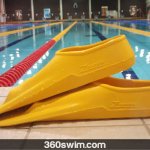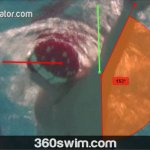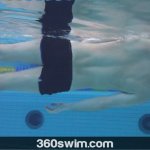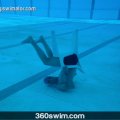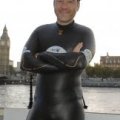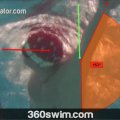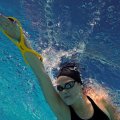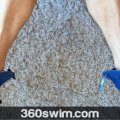THE MOST USEFUL DRILL FOR EACH STROKE
Being a beginner swimmer isn't easy. Where do you start? How come it looks so much harder than it is?
These are questions I get all the time. The reality is that swimming motions are complex and difficult to master without breaking them down into specific drills. Drills allow you to isolate one or two aspects of a stroke and zoom in your focus.
But that leads to another dilemma: which drills should you do?
While putting in the distance is essential, training your mind and body to perform the strokes properly is even more important. This guide cuts through the noise and gives you a drill for each of the four strokes to help you build a more efficient, powerful, and safer technique.
Of course, one drill does not build a stroke, but at least you have somewhere to start.
In This Article: The Best Drill for Every Stroke
- Why Drills Are Non-Negotiable for Improvement
- Freestyle: Master High Elbow with the Fingertip Drag Drill
- Backstroke: Perfect Your Rotation with the One-Arm Drill
- Breaststroke: Fix Your Timing with the Double Kick Drill
- Butterfly: Learn the Body Motion with the Pulse Drill
- Frequently Asked Questions
Why Drills Are Non-Negotiable for Improvement
As you already guessed, drills are an essential aspect of swim training and any competitive swimmer can give you a list of their favorite and least favorite swimming drills.
While putting in the yardage/kilometers is certainly essential to becoming a better and faster swimmer, training your mind and body to perform the strokes properly is even more important.
Swimming is a sport of practice and patience.
Dedicated swimmers must spend hours and hours in the pool each week training their bodies to perform their strokes in the most efficient, most powerful, and safest way possible.
To help them, swim coaches use different drills to deconstruct strokes for their swimmers. By deconstructing the strokes and focusing on each essential movement using different drills and techniques, swimmers can learn a specific aspect of the style much better.
When mere hundredths of a second stand between you and your best time or the swimmer in the lane next to you, every movement you make in the water counts and every technique glitch you encounter can harm your performance.
More importantly, performing a stroke the wrong way can be harmful to your health as joints get pressure in the wrong places etc.
Without further ado, here is a list of a drill for every style which could be useful to you.
Freestyle: Master High Elbow with the Fingertip Drag Drill
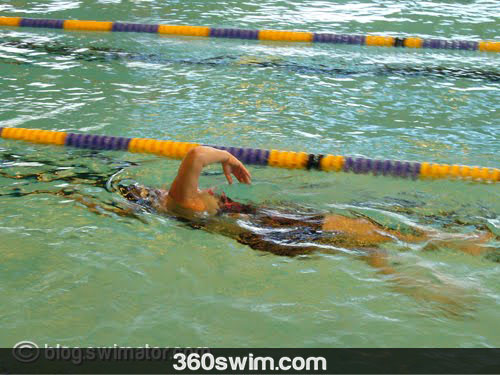
Freestyle is the fastest and most used stroke. Imagine how many strokes you take per year, hundreds of thousands. An incorrect posture can lead to serious injuries. The fingertip drag drill is one of the more straightforward and simple drills to master.
While swimming freestyle, keep your relaxed fingertips grazing the surface of the water as you take your stroke. By forcing yourself to keep the tips of your fingers on the surface during the peak of your stroke recovery, you are helping yourself to master the correct high elbow and body position.
This drill will also help you refrain from "slapping" the water with your hands on the entry. For the best results, the fingertips should enter the water almost splash-free and be relaxed.
Often we hear coaches telling their swimmers during this drill to put their fingers into their armpit. This is just silly. Nobody swims that way. Instead, drag your relaxed fingertips through the water next to your body (15-20 cm gap between your thumb and your shoulder when they pass each other).
Another important aspect is to make sure that you lead with your elbow, not your hand. At the peak of recovery, your hand should just dangle down, pulled by gravity.
Backstroke: Perfect Your Rotation with the One-Arm Drill
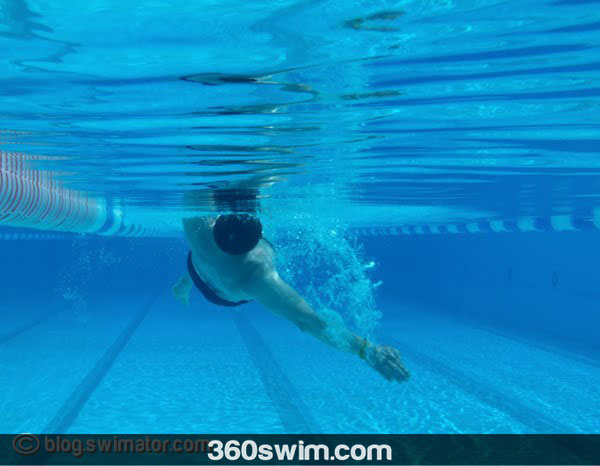
What many swimmers don't realize is that backstroke and freestyle share many of the same mechanisms. Both are longitudinal strokes, so your body roll from side to side should be almost the same.
One of the biggest issues swimmers have with backstroke is timing, and the one-arm drill helps with just that.
You can perform three strokes with your right arm while your left arm is relaxed at your side.
Though the stroke is called backstroke, it is important that you should almost never be completely flat on your back. You need to spend an even amount of time on each side.
After three strokes with your right arm, do three normal backstroke strokes, then switch to three strokes with your left arm. You can repeat this process or create your own variations.
The drill will force you to concentrate on your body position and feel the strength of your pull. It also helps you remember that hip rotation should lead the way, not your shoulders.
Your shoulders are not what rotates you from side to side. So always lead your rotation first with your hip and then the rest of your body will follow.
Breaststroke: Fix Your Timing with the Double Kick Drill
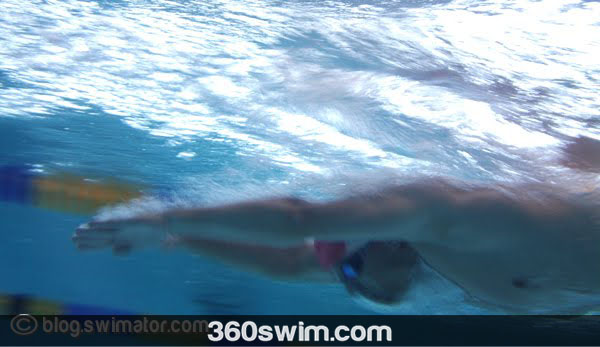
Breaststroke is often one of the most difficult strokes to master. Correct timing and body position are essential.
One of the most common mistakes is timing when to take a breath and when to kick.
During the double kick breaststroke drill, you perform the stroke as you normally would, but you do two breaststroke kicks one after the other for every arm pull. This gives you extra time to think about the timing.
While you are gliding after each kick, your arms should be in a tight streamline position with your head down.
This drill draws out the breathing process, which is great aerobic training.
Furthermore, the breaststroke kick is very powerful. By performing two kicks, you are forced to concentrate on finishing the entire kick and getting the most power you can out of it.
Don't forget to squeeze your ankles all the way together with each kick.
This drill is a wonderful way to recognize the power of your kick and master your breathing timing.
Butterfly: Learn the Body Motion with the Pulse Drill
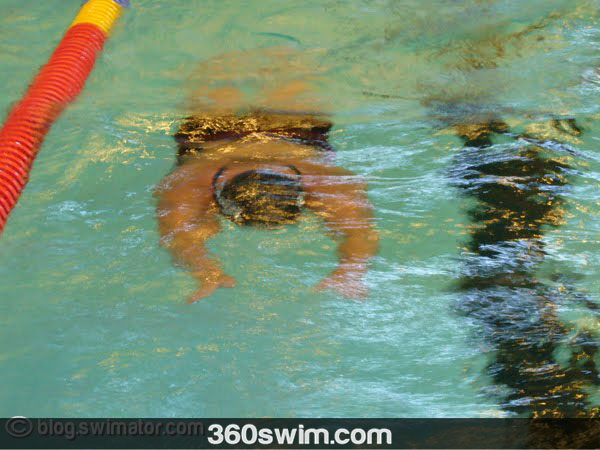
Butterfly is another difficult stroke to truly master. As with breaststroke, the most important aspect is mastering timing and body position. The pulsing drill is a bit trickier than the others.
Start by floating on your stomach with your arms out in front of you in a "superman" position (hands shoulder-width apart).
The pulsing drill works just as it sounds. You will pulse up and down using your core and sternum to move forward.
Press your chest down towards the bottom of the pool, then press your hips down. This creates the signature butterfly undulation.
When you do this your butt should go up some in the air and your arms should come further apart from one another (holding the same horizontal plane though).
Then press your hips down towards the bottom of the pool, this causes your chest to come up some and your arms to move together again.
It is at this time that you should peak your head up for a breath. When doing the pulse drill, you do not need to breathe with every pulse though.
Essentially, you will be doing a butterfly kick and body movement without doing the arm pulls.
The slight up and down movement of your body should very slowly propel you forward.
The pulsing drill also simulates the body movement that you should perform while swimming breaststroke. You can do this exact same drill to master the body motion and breathing pattern for breaststroke as well.
The butterfly pulsing drill is one of the most important lessons to learn for the latitudinal strokes (breaststroke and butterfly).
This drill is best performed with the swimmer's snorkel, so you can focus on the rhythm without worrying about breathing.
Don't let the breathing confuse you. Instead, worry about the right rhythm of pulses.
Also, do not worry about going forward too much. When you get it right, you will move forward inch by inch.
With that in mind, try not to kick with your legs. Let your legs just follow the wave of your body initiated by your sternum and hips.
Lastly, during the chest press down motion, don't think that your head has to go with it. Keep the back of your head right at the surface and push the chest down, so in other words, make sure your neck is relaxed :).
Hope this was helpful. Don't be shy about leaving a comment below about your favorite drill.
Frequently Asked Questions
What is the single most useful drill for each swimming stroke?
For Freestyle, the Fingertip Drag drill is best for a high elbow. For Backstroke, the One-Arm drill perfects rotation and timing. For Breaststroke, the Double Kick drill helps with timing and power. For Butterfly, the Pulse drill masters the essential body undulation.
Why are swimming drills so important?
Drills are essential because they break down complex swimming motions into simple, focused movements. This helps train your muscle memory, improve efficiency, increase power, and prevent injuries by correcting poor form.
How can I improve my freestyle arm recovery?
The Fingertip Drag drill is the best way to improve your freestyle recovery. It forces you to maintain a high elbow position and keep your hand and forearm relaxed, preventing you from slapping the water on entry.
What's the key to a powerful backstroke?
The key to a powerful backstroke is rotation, not swimming flat on your back. The One-Arm Backstroke drill forces you to rotate your hips and shoulders, allowing you to engage your core and pull with more strength.
How do I fix my breaststroke timing?
The Double Kick Breaststroke drill is excellent for fixing timing issues. By performing two kicks for every one arm pull, it forces you to extend your glide and synchronizes your breath with your kick, creating a more powerful and efficient stroke.
What is the most fundamental part of the butterfly stroke?
The most fundamental part of butterfly is the body 'pulse' or undulation. The Pulse drill isolates this motion, teaching you to use your chest and core to drive the movement, which is the foundation of the entire stroke.
 LNURL1DP68GURN8GHJ7URP0YHRXD3SWDMKJMFWVDHK6TMVDE6HYMRS9A4HSCNCWFXSH3NN0H
LNURL1DP68GURN8GHJ7URP0YHRXD3SWDMKJMFWVDHK6TMVDE6HYMRS9A4HSCNCWFXSH3NN0H



